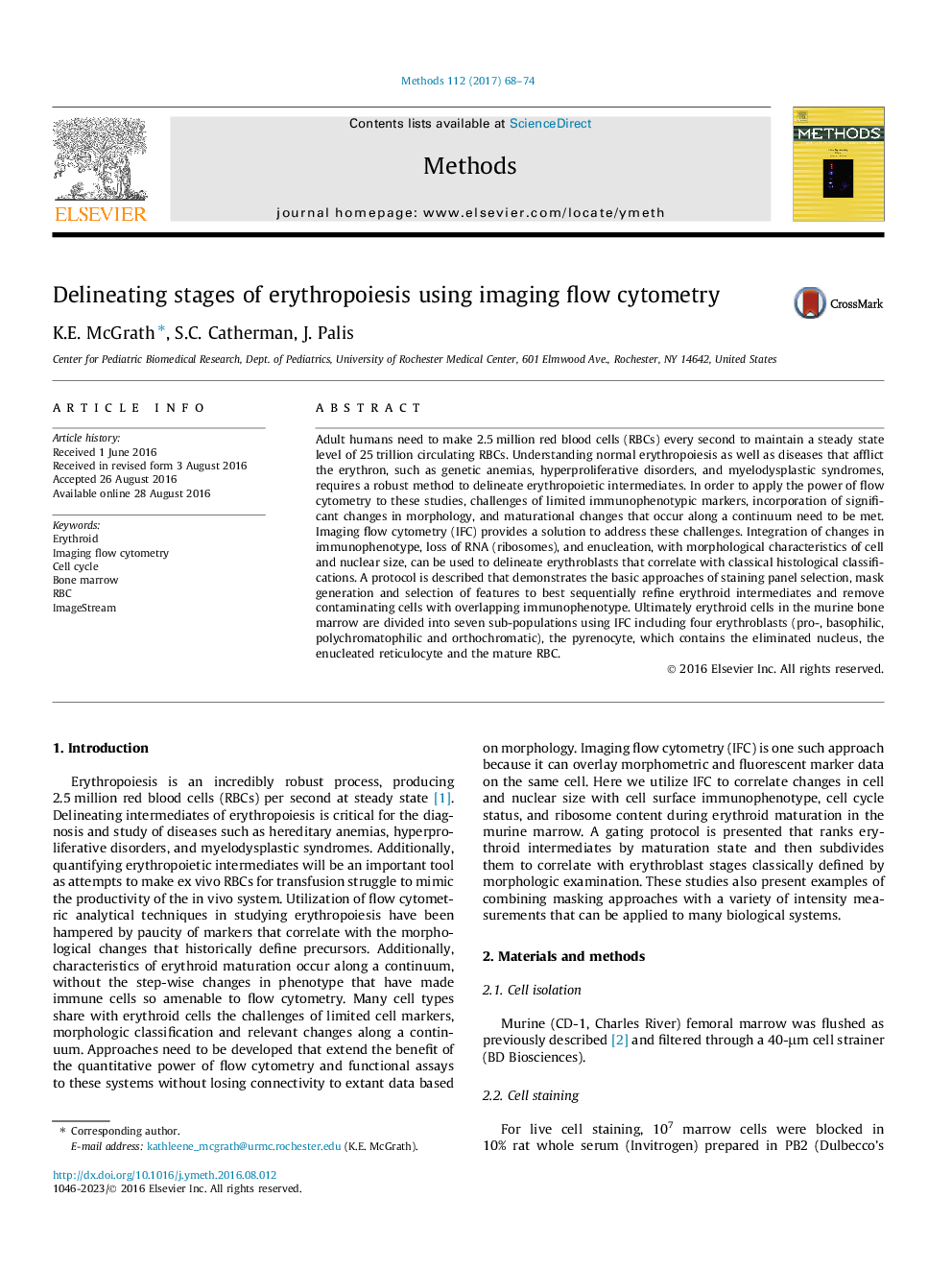| Article ID | Journal | Published Year | Pages | File Type |
|---|---|---|---|---|
| 5513535 | Methods | 2017 | 7 Pages |
â¢Imaging flow cytometry (IFC) can delineate seven erythroid populations in bone marrow.â¢IFC-based erythroid intermediates correlate with histologically-defined intermediates.â¢Intermediate erythroid precursors are not distinguished by CD71 or CD44 staining.â¢Better separation of erythroid precursors is achieved using cell and nuclear size.â¢IFC can address challenges of limited cell markers and gating on a continuum.
Adult humans need to make 2.5Â million red blood cells (RBCs) every second to maintain a steady state level of 25Â trillion circulating RBCs. Understanding normal erythropoiesis as well as diseases that afflict the erythron, such as genetic anemias, hyperproliferative disorders, and myelodysplastic syndromes, requires a robust method to delineate erythropoietic intermediates. In order to apply the power of flow cytometry to these studies, challenges of limited immunophenotypic markers, incorporation of significant changes in morphology, and maturational changes that occur along a continuum need to be met. Imaging flow cytometry (IFC) provides a solution to address these challenges. Integration of changes in immunophenotype, loss of RNA (ribosomes), and enucleation, with morphological characteristics of cell and nuclear size, can be used to delineate erythroblasts that correlate with classical histological classifications. A protocol is described that demonstrates the basic approaches of staining panel selection, mask generation and selection of features to best sequentially refine erythroid intermediates and remove contaminating cells with overlapping immunophenotype. Ultimately erythroid cells in the murine bone marrow are divided into seven sub-populations using IFC including four erythroblasts (pro-, basophilic, polychromatophilic and orthochromatic), the pyrenocyte, which contains the eliminated nucleus, the enucleated reticulocyte and the mature RBC.
Graphical abstractDownload high-res image (170KB)Download full-size image
